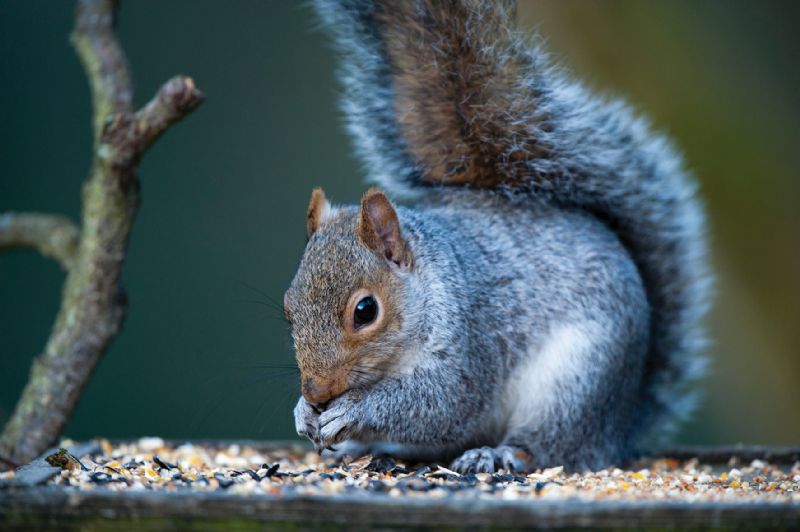- Home
- News, Articles & Reviews
We are hiring! Please click here to join our growing magazine delivery team in Gloucestershire!
Areas
Pets & Wildlife
Archive

Squirrel squabbles
All Areas > Pets & Wildlife > Wildlife Matters
Author: Dorothy Glen, Posted: Monday, 19th December 2022, 09:00
January is a sleepy time for our wildlife, as many creatures lie low in the cold months until the spring. But as you stroll through your local green spaces, you may notice that squirrels are still very much awake and active.
Their chittering and chases around trees and across paths give life to dull, cold days, but the purpose of all this dashing about isn’t just to keep warm – it’s squirrel breeding season.
Very successful at breeding
Grey squirrels commonly have two litters a year, the first born in the spring after the winter courtship and the second in summer. They are very successful at breeding in the UK, and can be seen easily on any walk in the park, woods, or raiding your garden bird feeder.
But as well as being one of our most common wildlife encounters, they are probably also one of the most disliked. A non-native and invasive species of rodent, grey squirrels have almost eradicated the native red squirrel from England, and threaten the population in the rest of the UK.
Grey squirrels dominate shared habitats
They were introduced in the 1870s to provide amusement in public parks and estates, but quickly spread into the countryside where they were unregulated by any natural predators. Larger, stronger and better able to store fat over winter, grey squirrels dominated the habitat and food they shared with the red squirrels.
To make matters worse, grey squirrels also carry squirrelpox, a virus they are immune to, but which is fatal to the reds. Ultimately, when grey squirrels are introduced to a red squirrel habitat, the reds are extinct within 15 years. Such is the threat that if a grey squirrel is trapped, it is illegal to release it. Instead it must be ‘humanely dispatched’.
A prominent fixture of our wildlife
Realistically, we must accept that the grey squirrel is here to stay, and is a prominent fixture of our wildlife. They are, as 1870s Britain recognised, amusing. Their nose-to-tail high speed chases around tree trunks make us smile; their double jointed ankles make it possible for them to rotate their feet backwards so they can descend trees head first.
We chuckle about their ability to forget where they’ve buried their nuts; in fact, this makes them excellent seed distributors for trees. They also show intelligence by hiding from other squirrels when burying their caches of food, and even pretending to bury it when they feel they are being watched.
So, this January when you take a frosty walk in the park, enjoy the presence of grey squirrels, as the Victorians intended. It’s not their fault they’re here, after all.Other Images
Copyright © 2025 The Local Answer Limited.
Unauthorized use and/or duplication of this material without express and written permission from this site's author and/or owner is strictly prohibited. Excerpts and links may be used, provided that full and clear credit is given to The Local Answer Limited and thelocalanswer.co.uk with appropriate and specific direction to the original content.More articles you may be interested in...


© 2025 The Local Answer Limited - Registered in England and Wales - Company No. 06929408
Unit H, Churchill Industrial Estate, Churchill Road, Leckhampton, Cheltenham, GL53 7EG - VAT Registration No. 975613000You are leaving the TLA website...
You are now leaving the TLA website and are going to a website that is not operated by us. The Local Answer are not responsible for the content or availability of linked sites, and cannot accept liability if the linked site has been compromised and contains unsuitable images or other content. If you wish to proceed, please click the "Continue" button below:




